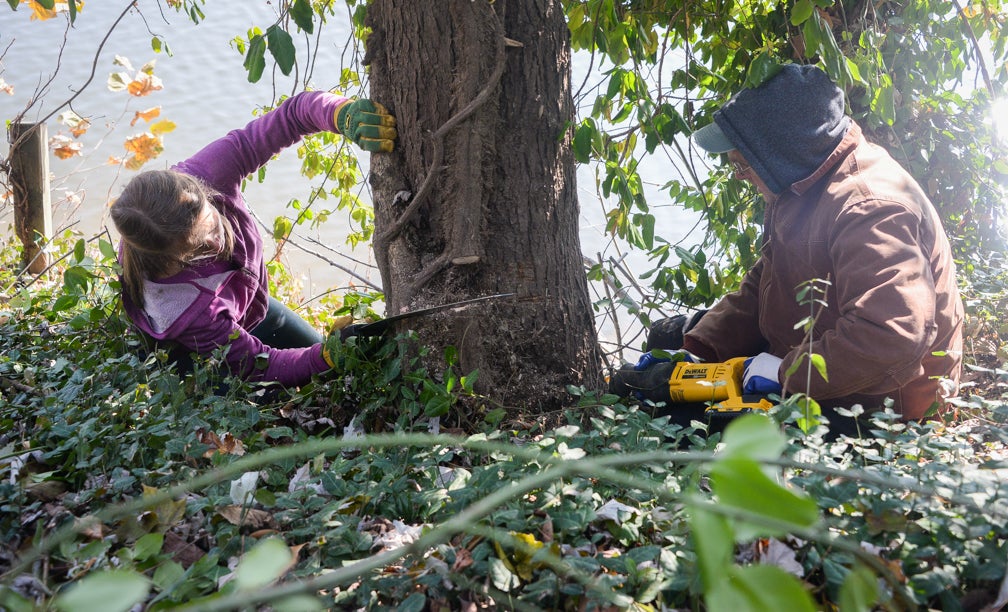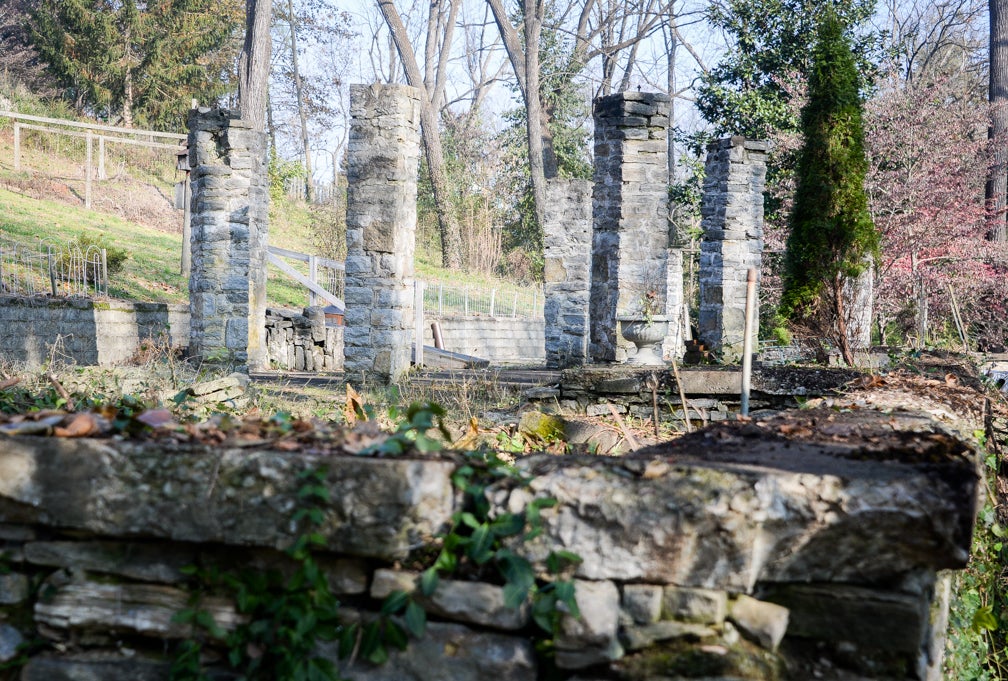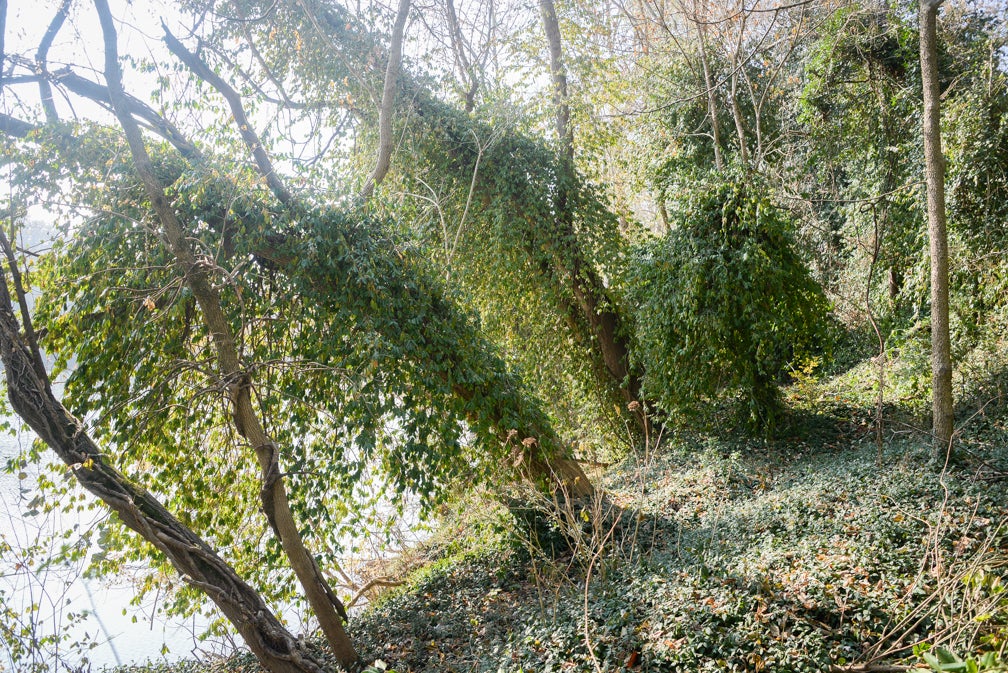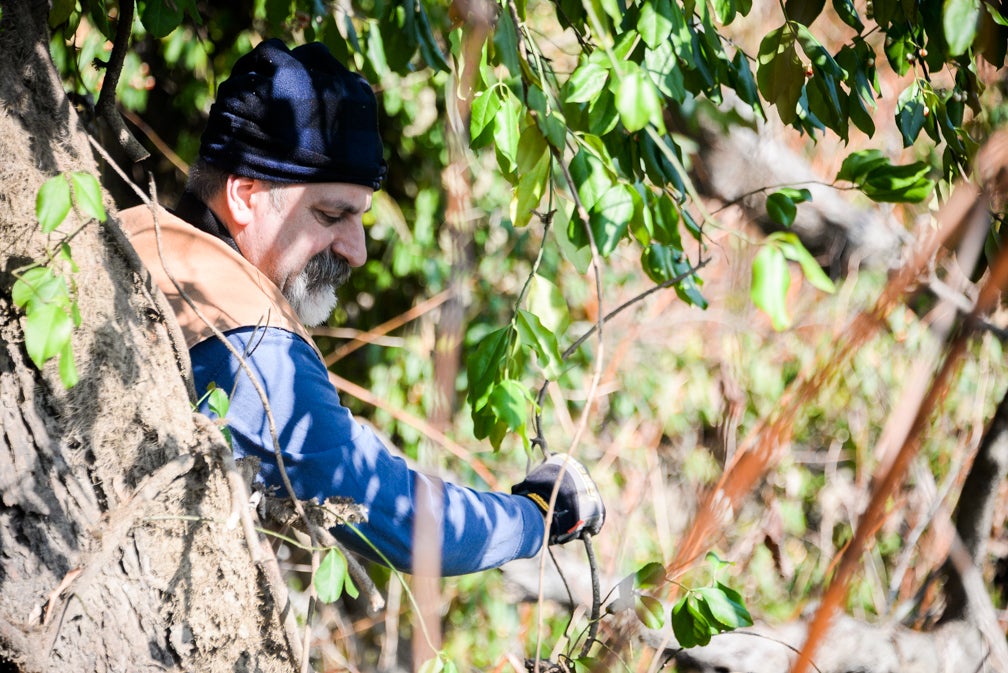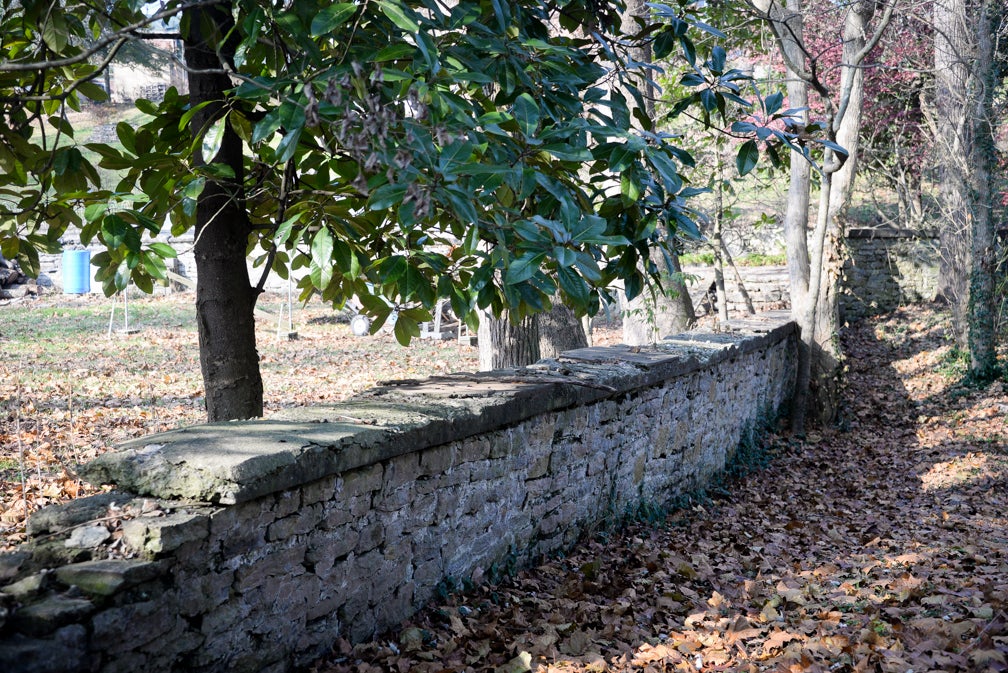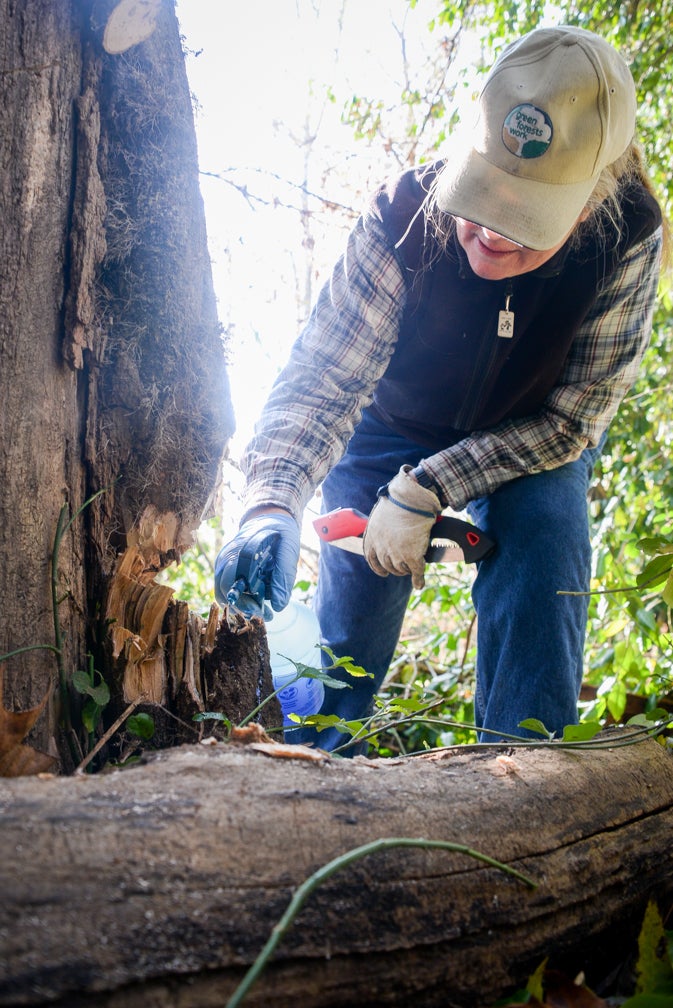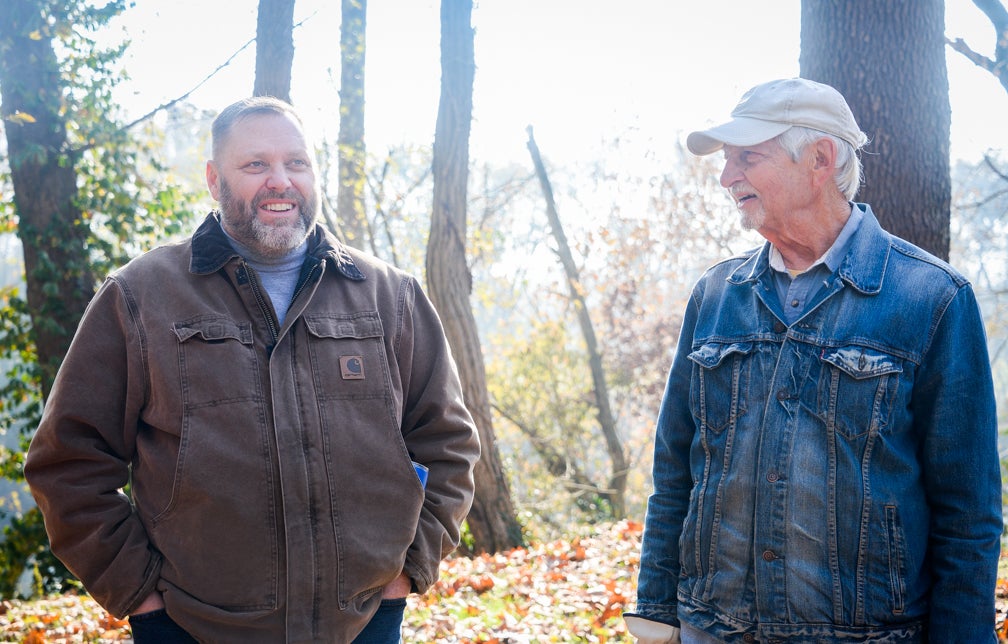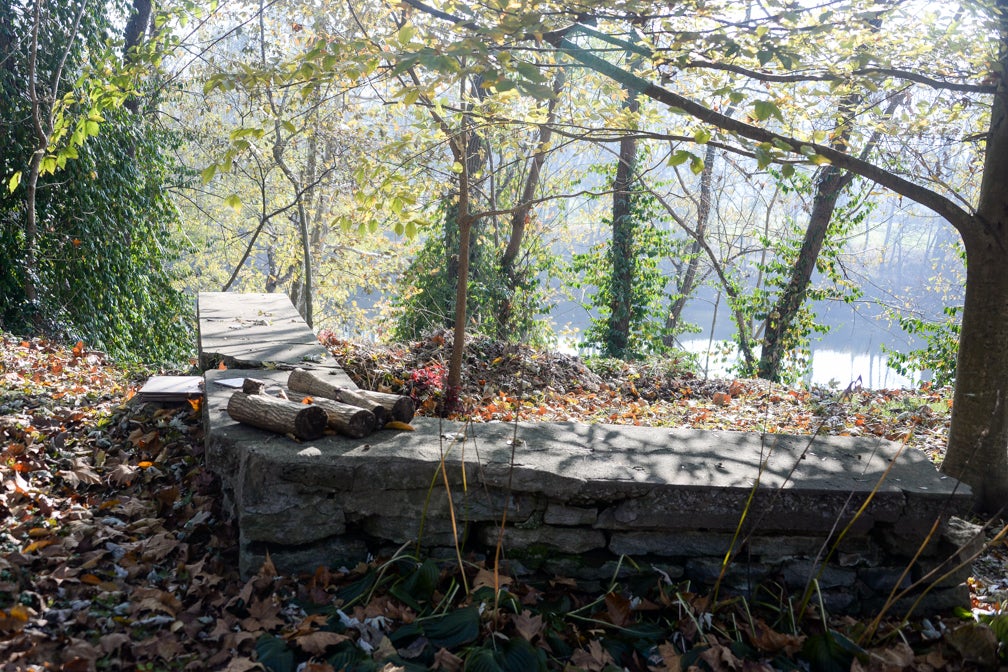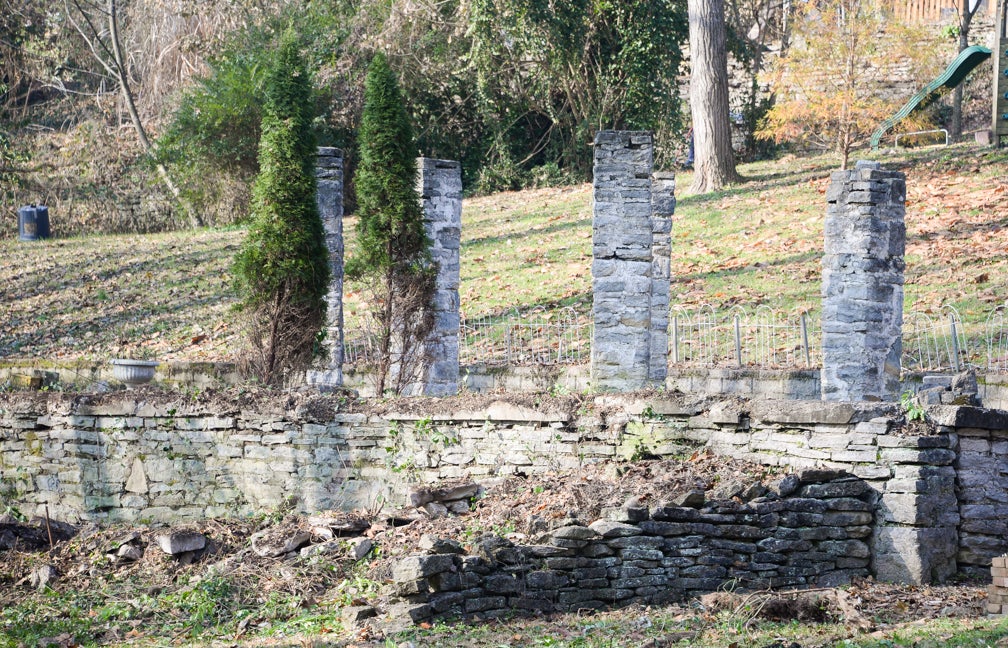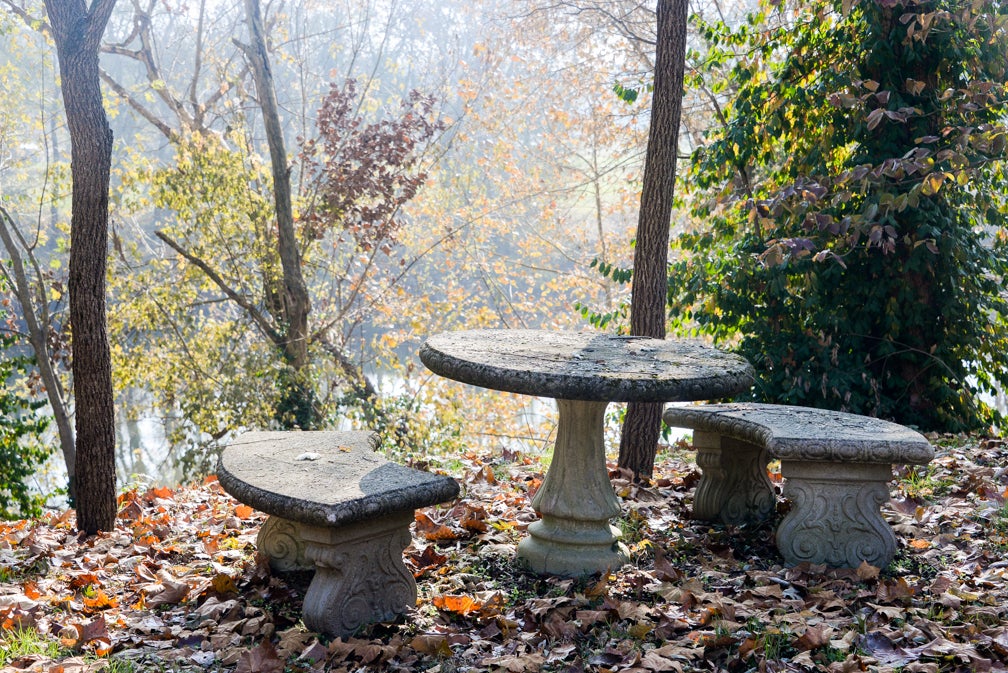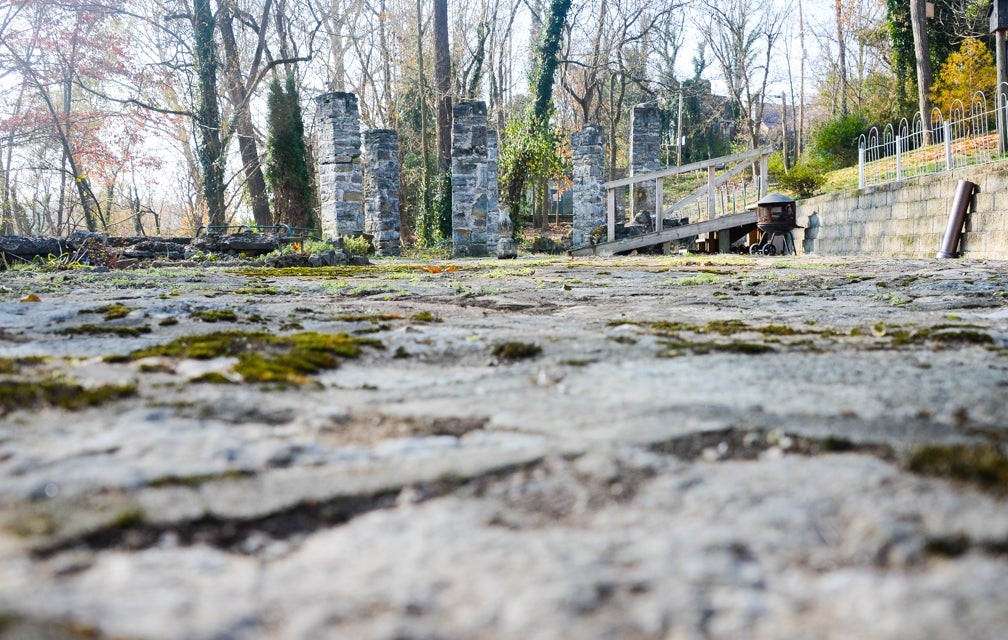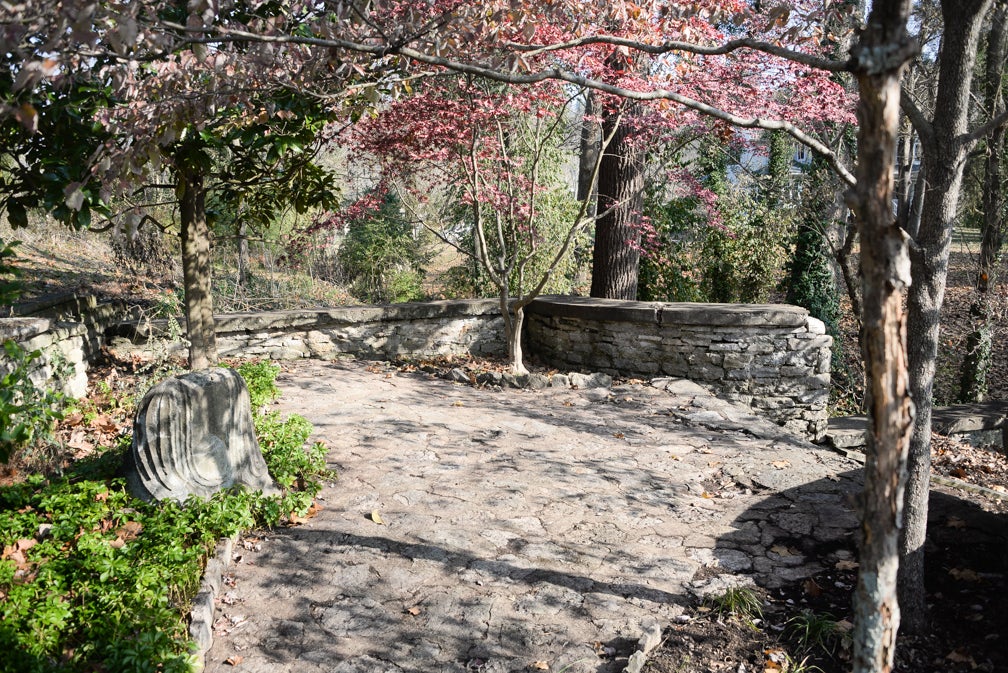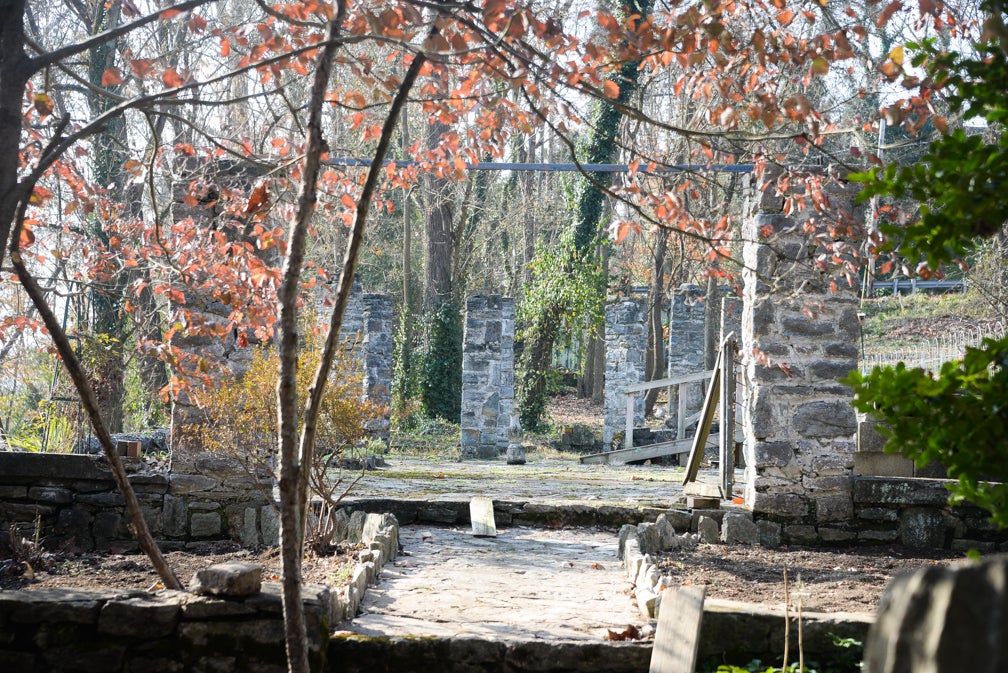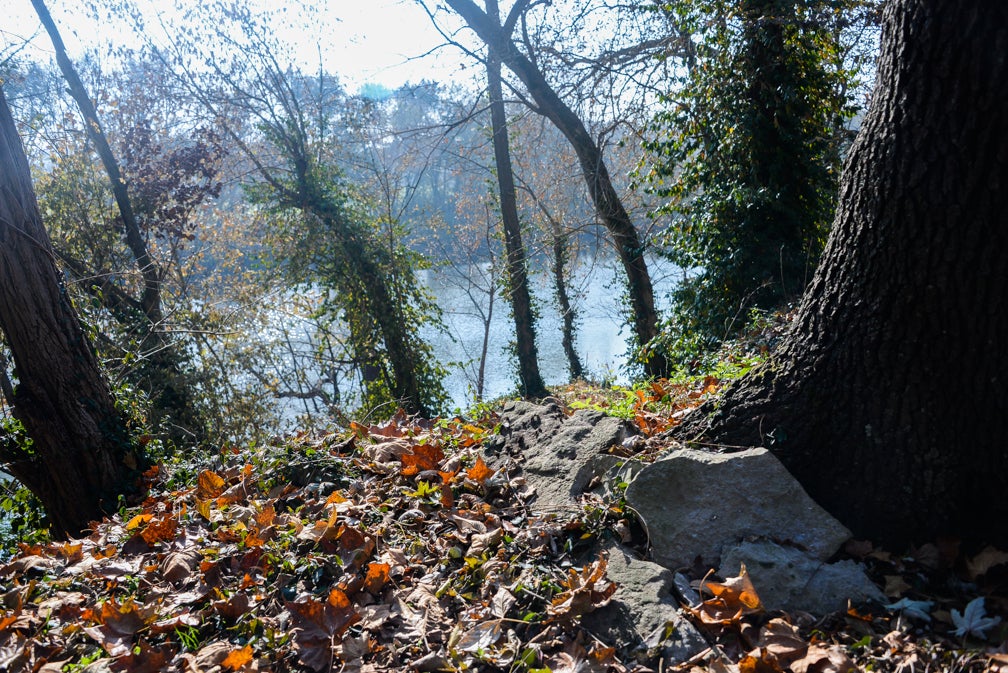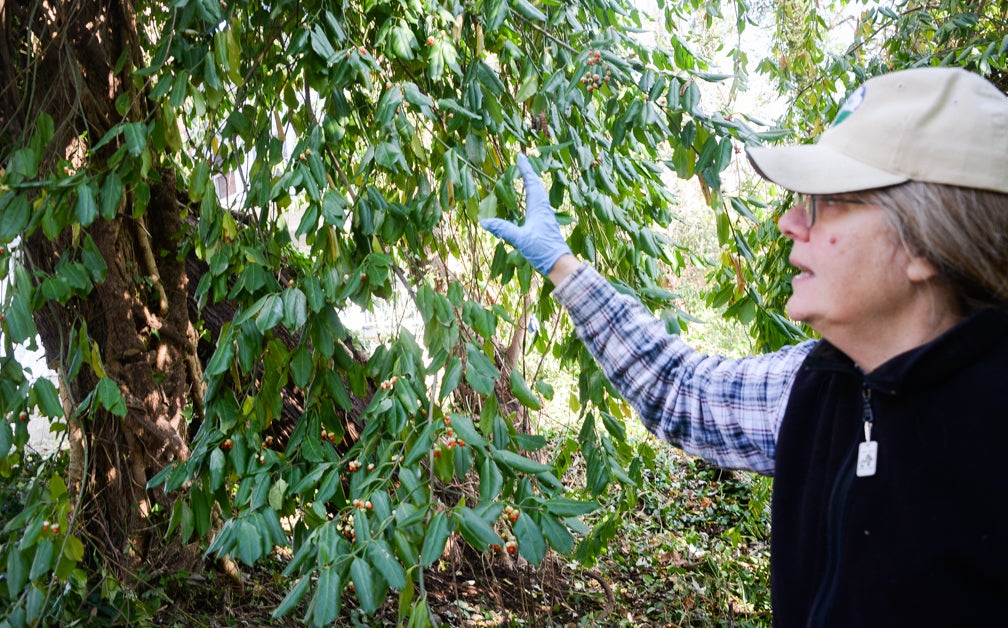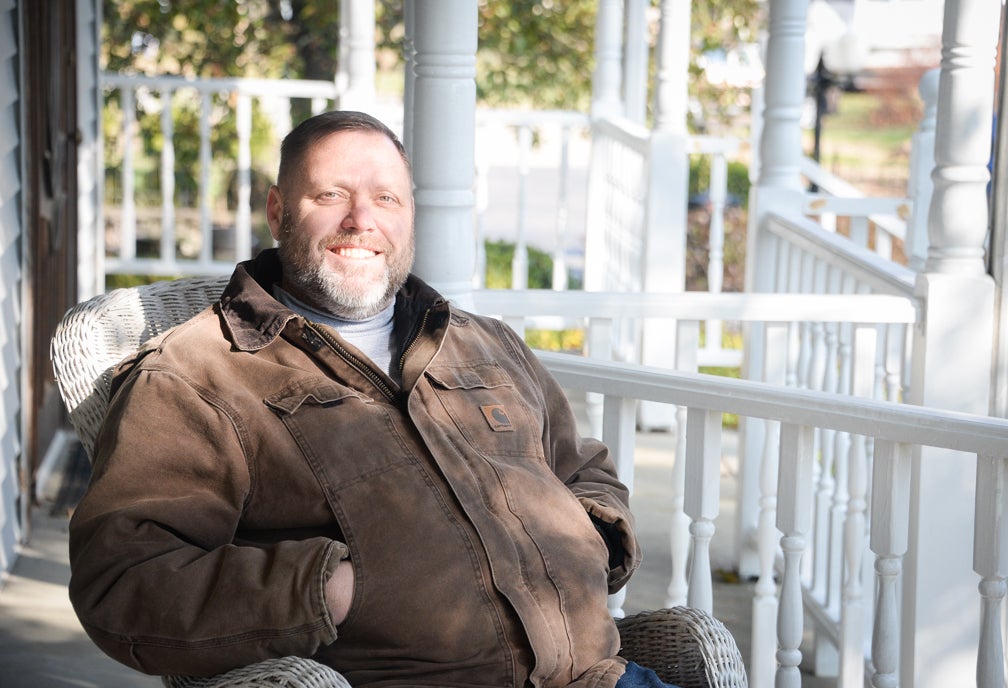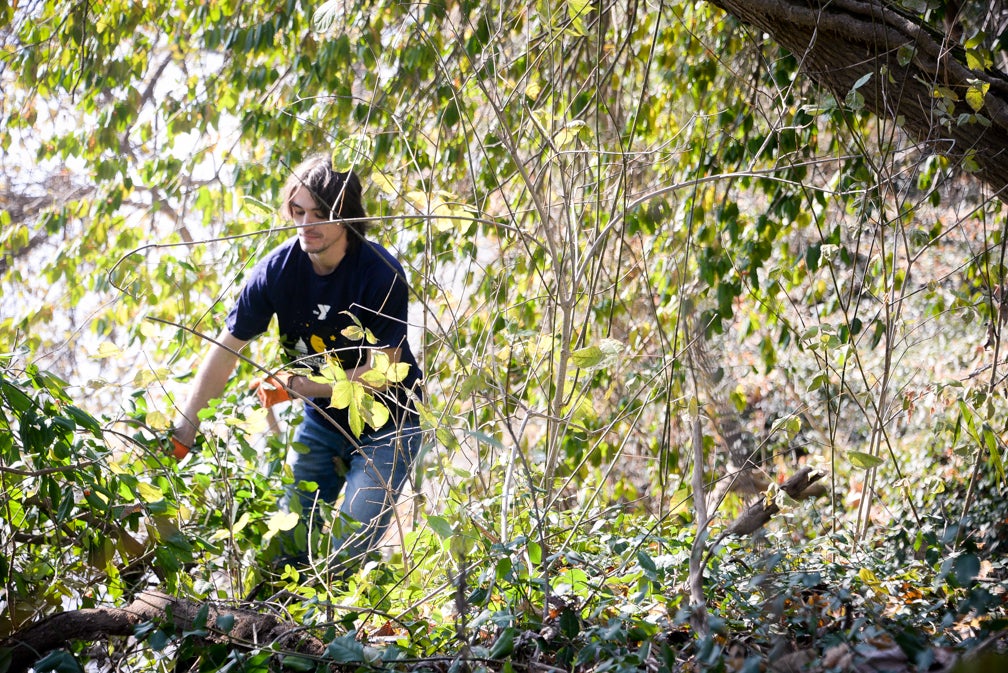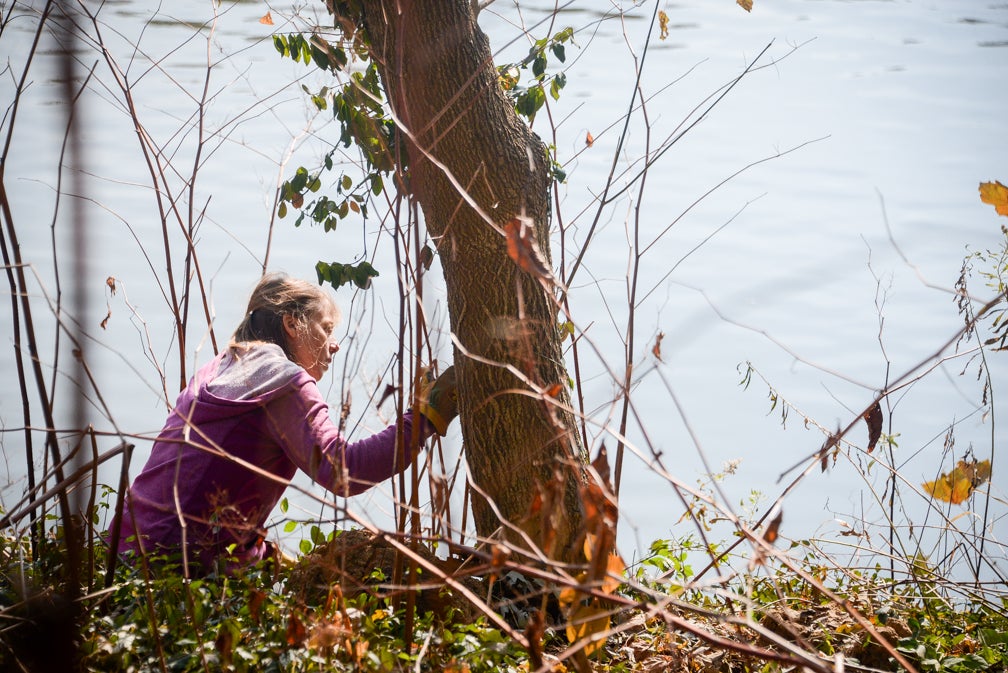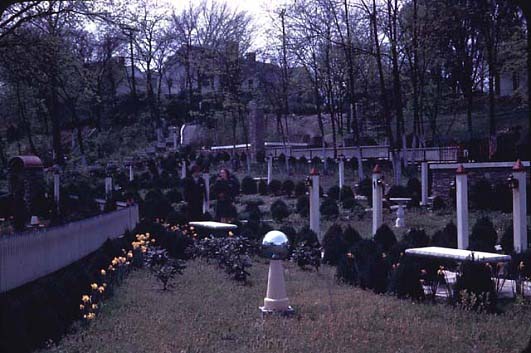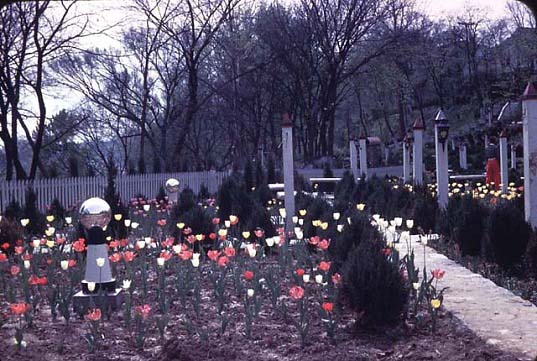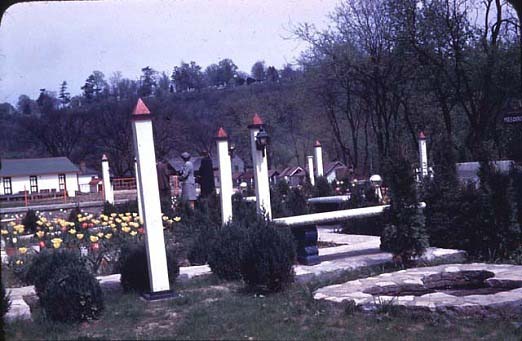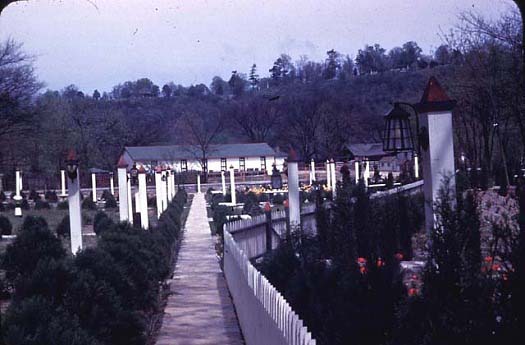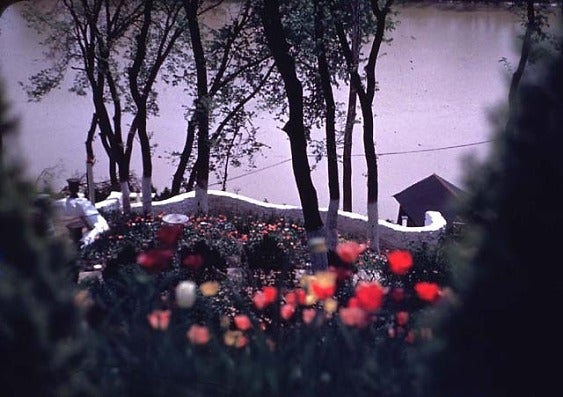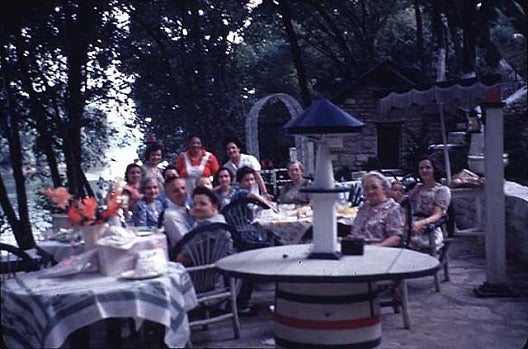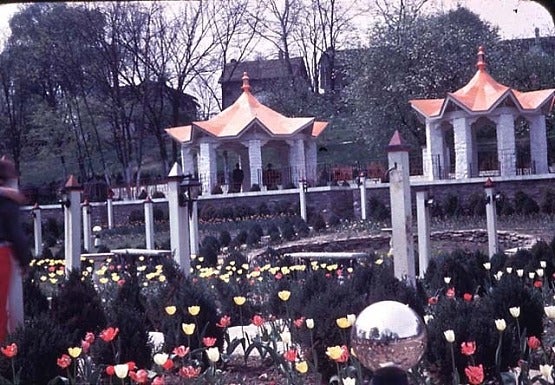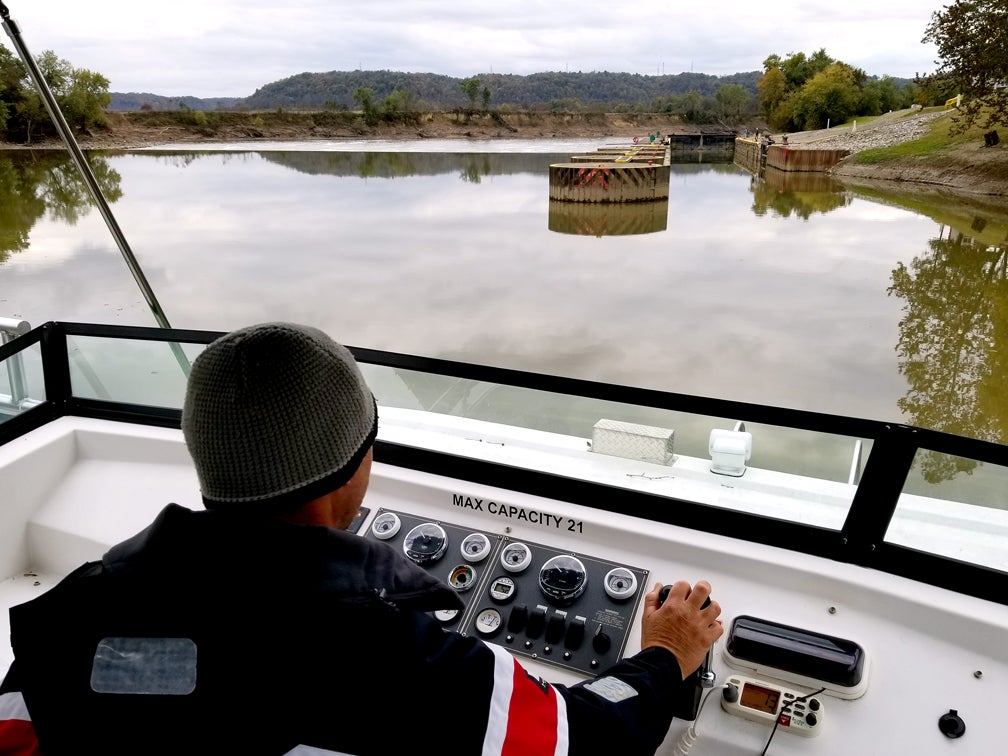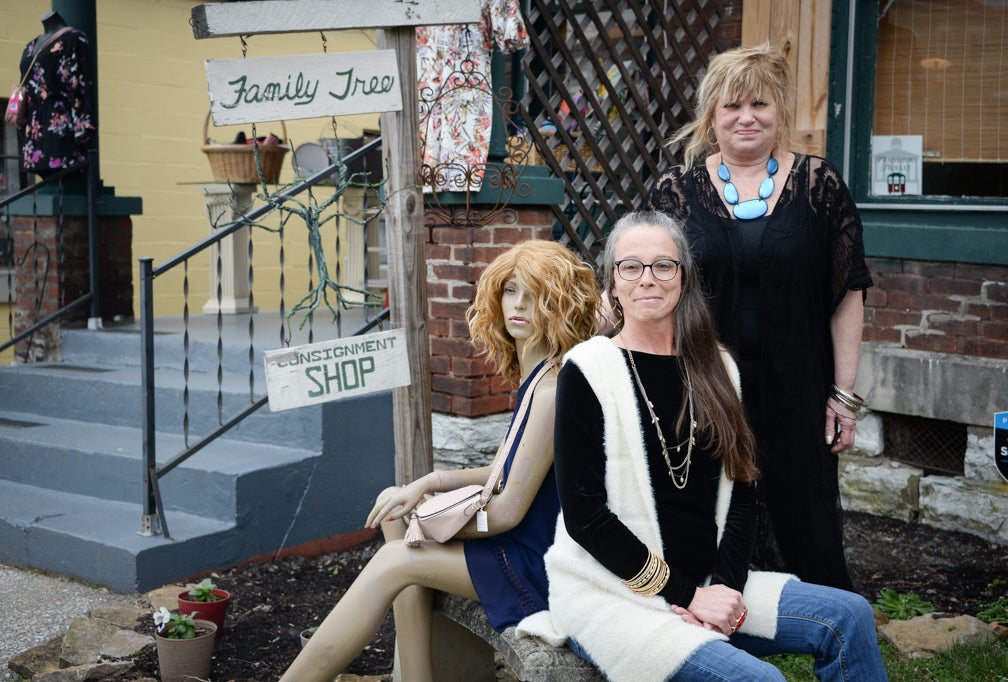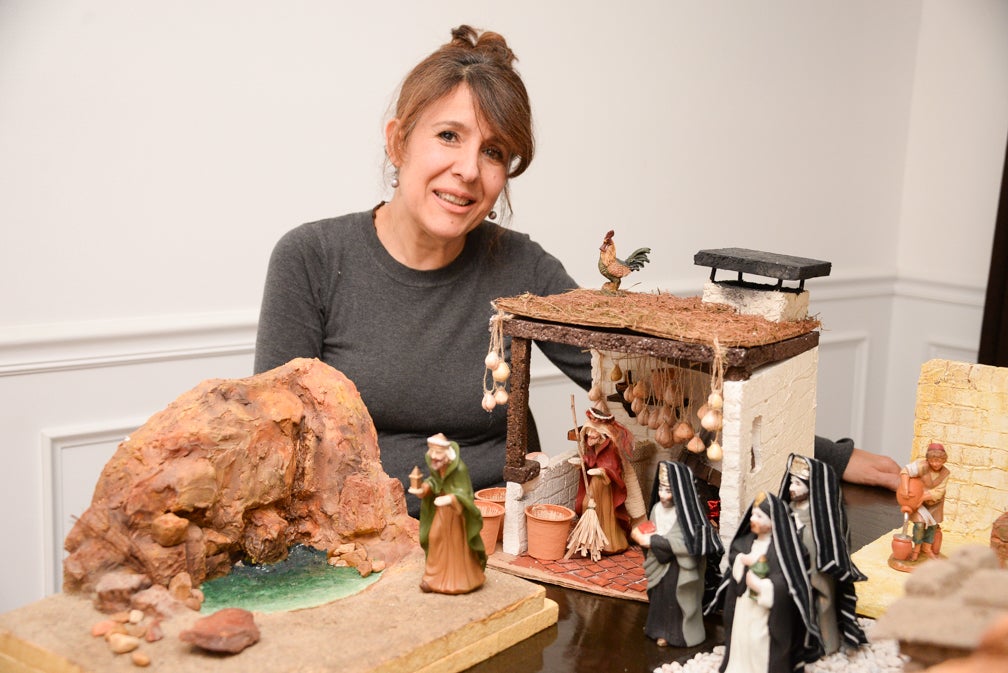Hidden amongst the branches and trees lining the Kentucky River, a once-glorious and free attraction in Frankfort sits just out of view.
But for the property owners who live near there, restoring some of the area would be a way to honor one of Frankfort’s most giving of citizens. They see it as an important part of being “good stewards of the land.”
Located about a mile outside of Frankfort on Admiral’s Lane, the property was once home to Melodye Park — the 9-acre public space filled with performance spaces, flowering bushes and landing areas for boats along the Kentucky River.
Now, the property is covered with weeds and forest-like growth of trees along the banks of the river.
Property owners Greg Isaacs and Nick Pettit say they’ve been working to remove weeds and overgrowth that cover what used to be the area’s premiere entertainment location.
Pettit moved to the area back in 1983. With two teenaged daughters, he thought they’d want access to the river, so he started mowing a path from their house on the hill down to the river bank. Throughout the summer, he says, the path got wider and he mowed more of the yard until one day, he discovered there was a terrace in his backyard.
“We didn’t know about Melodye Park at the time,” he said. “We just kept moving and scraping back a little bit more and a little bit more … as we unearthed more and more, we realized what was down here.”
What they had found was the first public park in Frankfort.
In the 1930s, Horwitz and his business partner, Carl Schneider, ran a cooperage in Frankfort to supply barrels to bourbon distilleries. Horwitz, according to a Courier-Journal Roto Magazine article from 1946, fell in love with the area and bought a houseboat to live on the river in and some property to tie up to. A Cleveland native, Horwitz would occasionally buy property next to his landing site until he had amassed nine acres of land.
Over the course of the next few years, he built a park for his new hometown and named it after his daughter, Melodye Horwitz, then 2 years old.
It was a sight to see, articles from the time say. Within the park were boat landings, swimming areas, bathhouses, two copper-topped Chinese pagodas, an artificial waterfall, strings of red, white and blue lights and more than 400 flowering plants including roses and tulips.
Horwitz held dinner parties, showed movies and brought in bands to the park, and opened it all up to the city for free. Boaters from Cincinnati, Evansville and Louisville would come down the river just to join in the fun. Docking on the boat landings were, like everything else, free.
“Melodye Park, which Horwitz estimates cost him at least $60,000 not counting his own time, is something that, like Topay, just grew. It, in fact, has been over nine years in the making,” an article in Roto Magazine said. “New Melodye Park, which is located on the west bank of the river about a mile above the middle of Frankfort, isn’t an ordinary kind of park. It stands out like a sore thumb in a red bandage for at least two reasons. First, its brilliant red, white and blue trimmings just naturally make it stand out and, second, it has so many things seldom found in privately owned parks, especially one in which the public is welcome to roam free at all times.”
In the 1940s, the park was damaged by flooding. Horwitz installed a flood wall, at a cost of around $15,000. But in the 1950s, the park was flooded again and Horwitz abandoned it.
When Pettit discovered that he had uncovered the park, he told his then neighbors and started learning more about the property. What they learned was that while the property had history, it was also up for development.
“The land owner was working to put in a 43-unit apartment complex,” he said. “We thought they couldn’t do that because it was in a flood plain, but the flood plain was identified after the property was sold so it was grandfathered in.”
The neighbors fought the landowner in court. Eventually, the land owner offered them the land instead. The group formed the Melodye Partners and purchased the land, then separated it so that each family had a piece of the park.
Since then, the group has worked to pull back a little of the wilderness that has overtaken the park. Isaacs works on an area close to his house on Admiral’s Landing, while Pettit takes care of the property adjacent to the property his house sits on.
The area has been the backdrop for two weddings, Pettit says, friends and family members that wanted to get married on the terrace.
Now, some thirty years later, Pettit and Isaacs are trying to bring the park back to a livable standard. It won’t be restored to the original, which Horwitz employed five men to maintain, but it will be kept up, the men say.
Part of Isaacs’ cleanup crew is the Remove Invasives Partnership (RIP) of Franklin County which is helping him remove invasive plants, such as winter creeper, bush honeysuckle and Japanese knotweed that have taken over the banks of the Kentucky River.
“By improving the conditions of the banks, we’re improving the aesthetics,” Joyce Bender, a volunteer botanist with RIP and retired manager for the Kentucky Nature Preserve System, said. “It will look a lot nicer for people on boats. The river is a jewel to have run through town.”
In November, volunteers worked to clear winter creeper that had overtaken the canopy of cottonwood, sycamore and black locust trees on the riverbank. Bender said if the winter creeper isn’t removed, it would eventually overtake the tree, causing it to die and fall, which makes the river bank unstable.
“I don’t think we want to bring (the park) back to the original,” Isaacs said. “I think it’s more getting it back to livable. We don’t have the ability to care for that many tulips and rosebushes, or put in a copper pagoda.”
And when they’re finished, it won’t be open to the public.
“It’s a different time, and a different way of life,” Isaacs said. “We just want to be good stewards of the land.”

